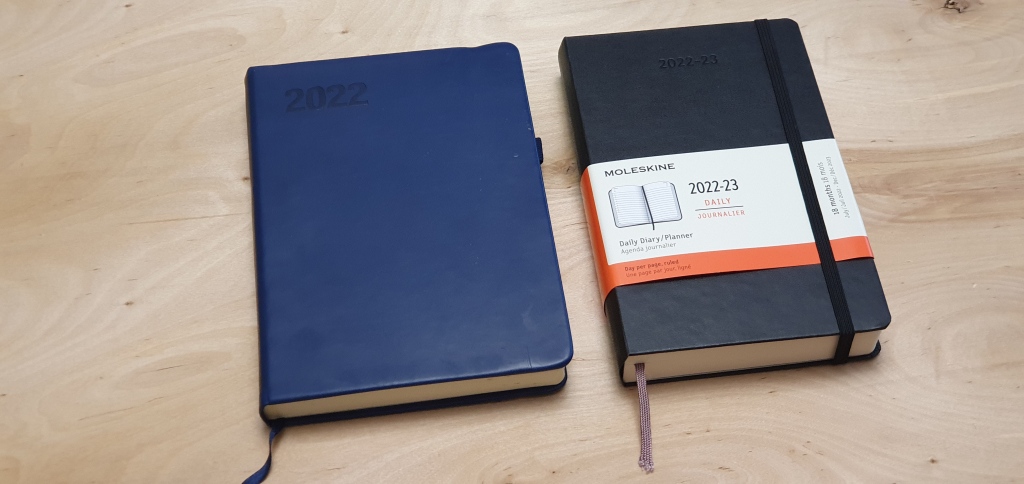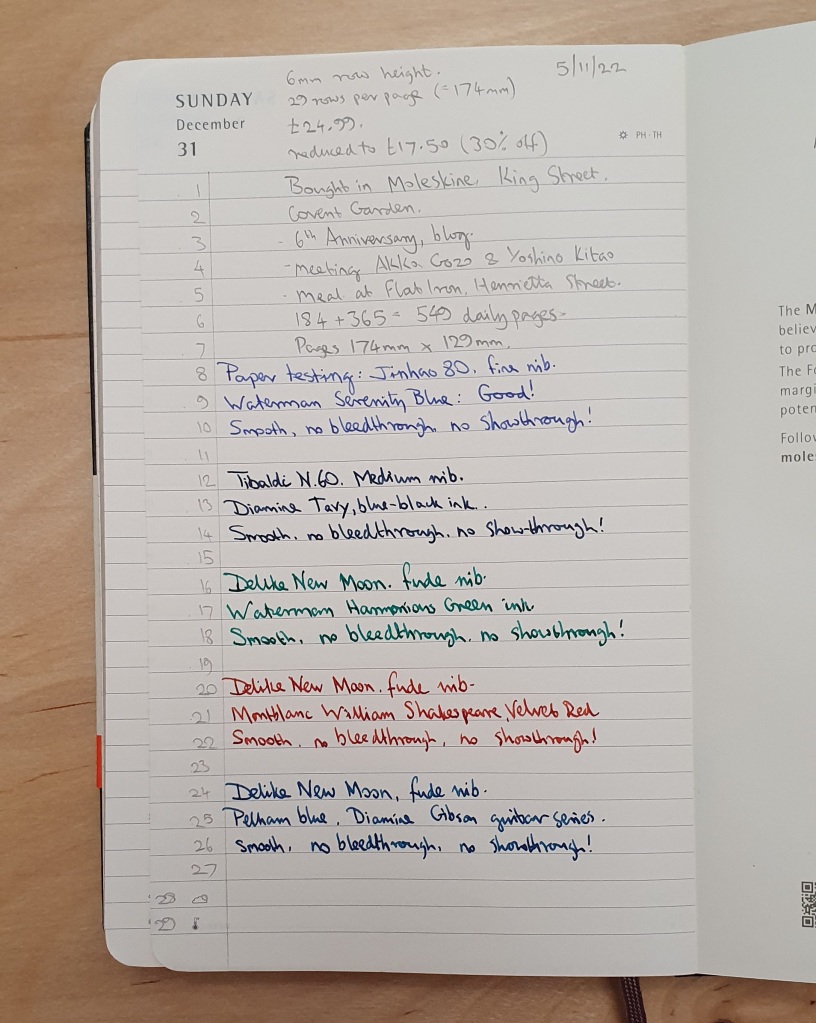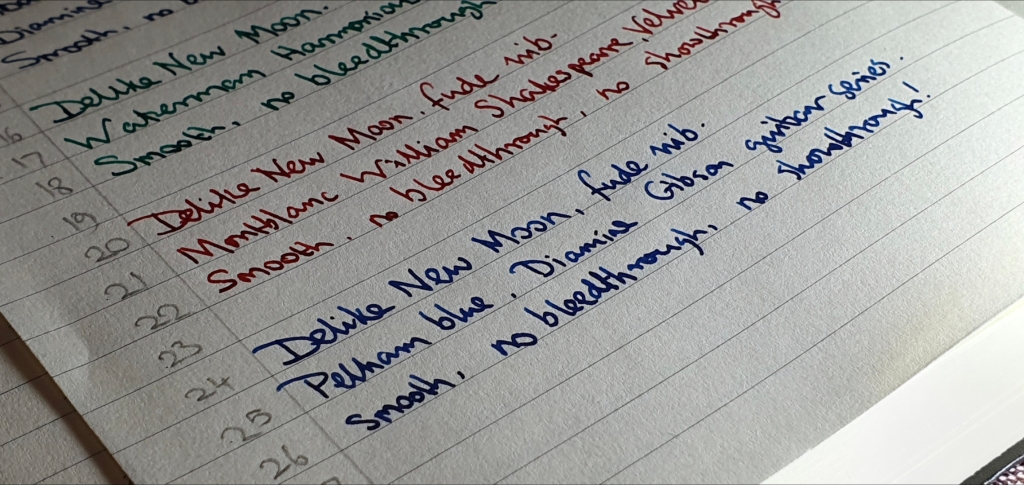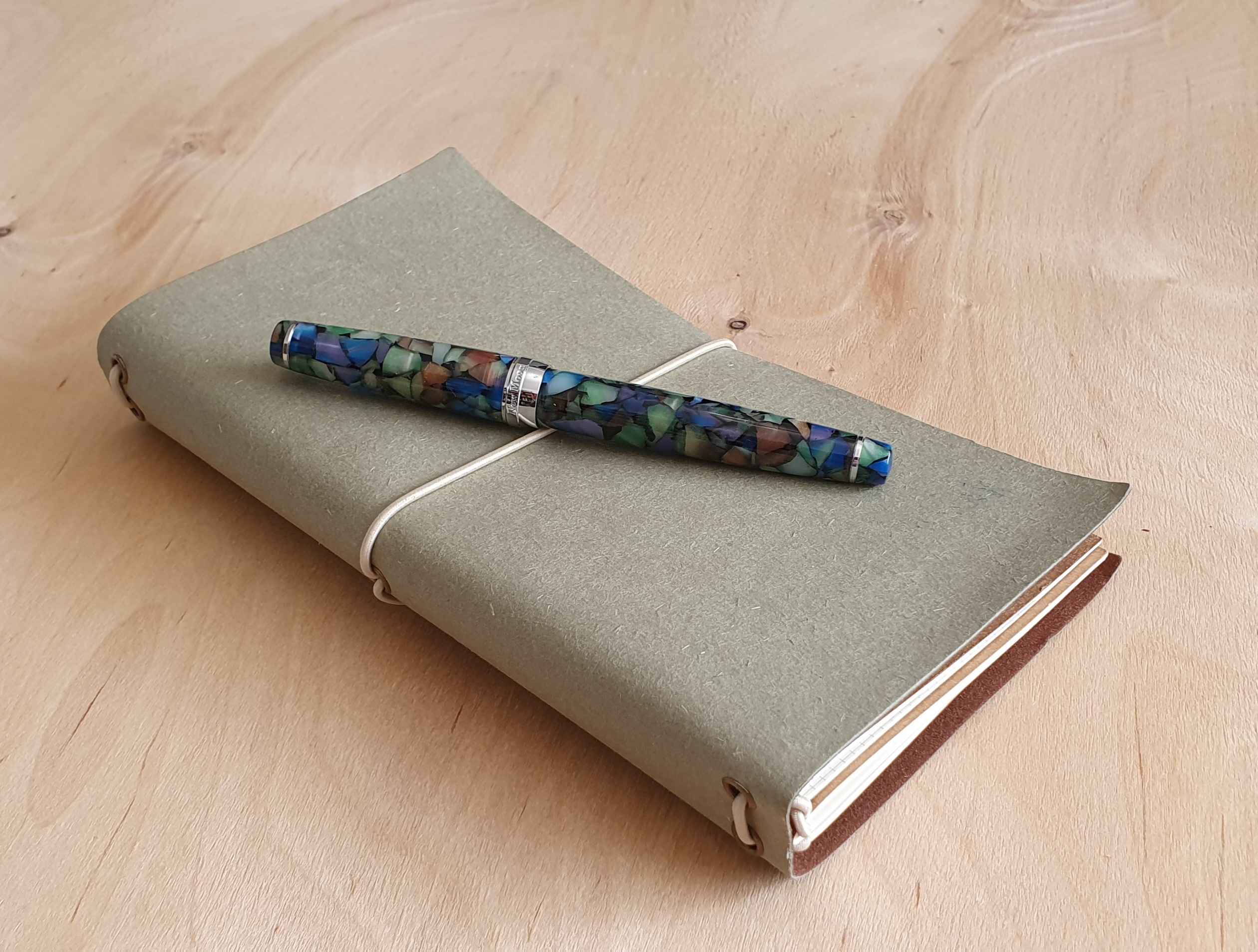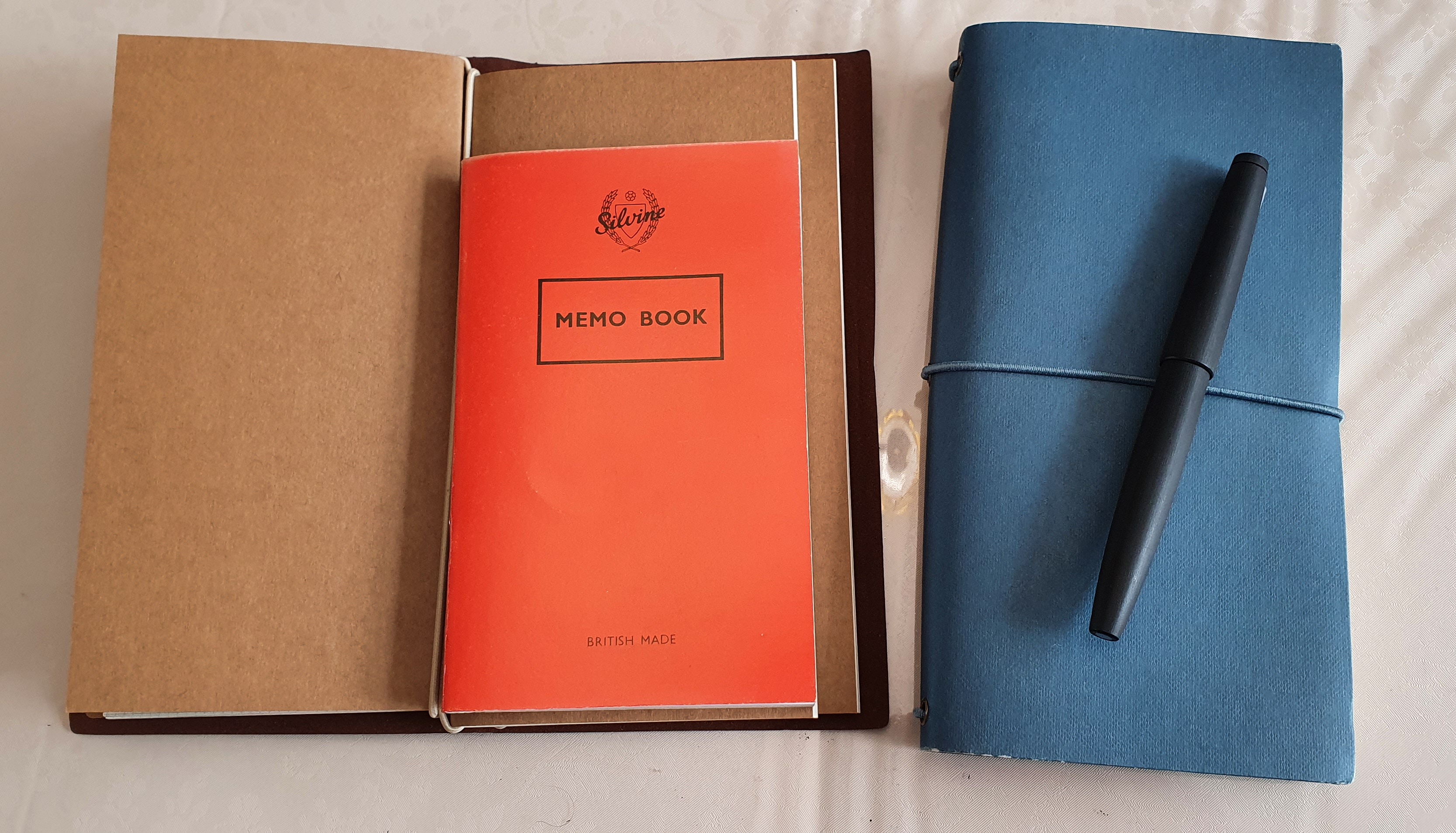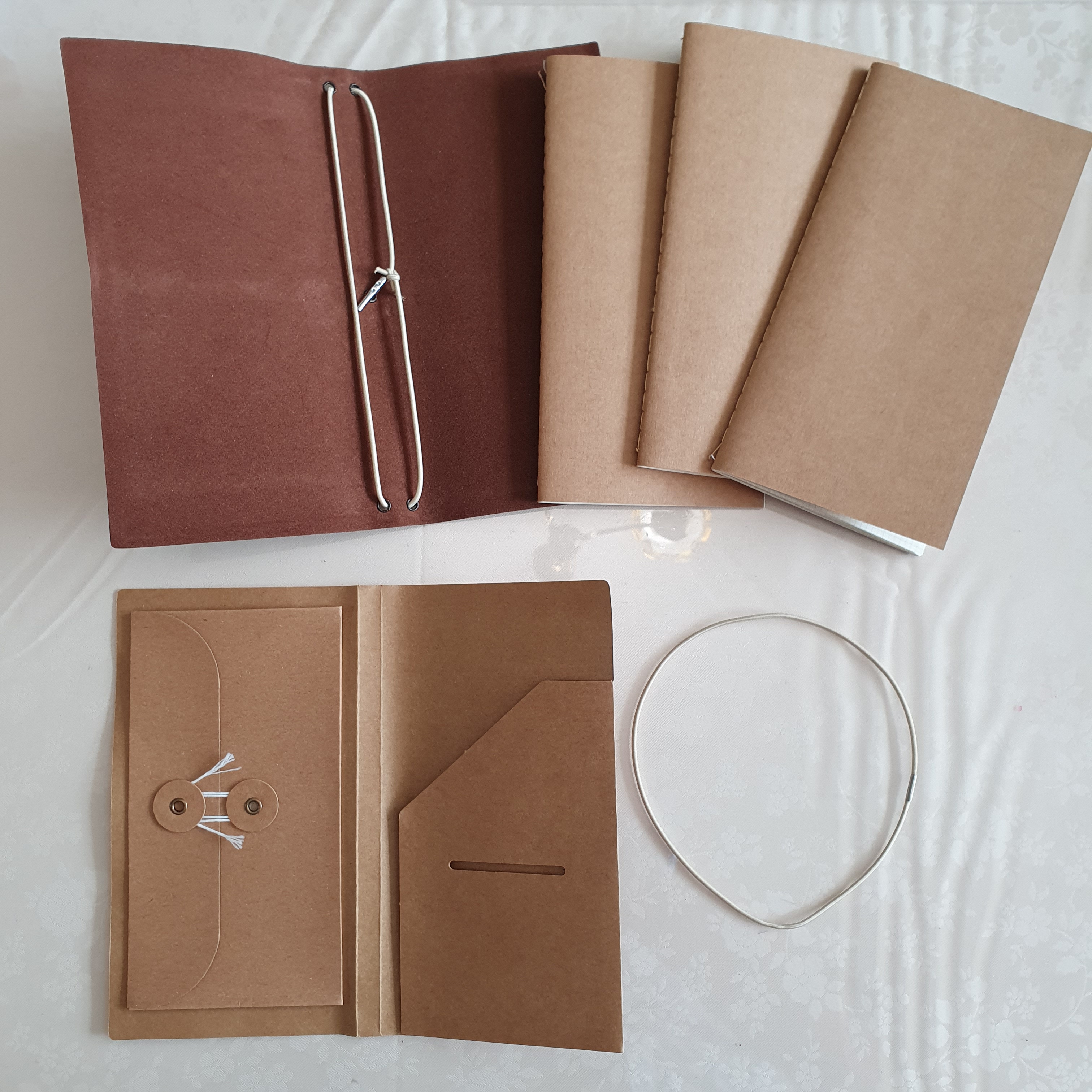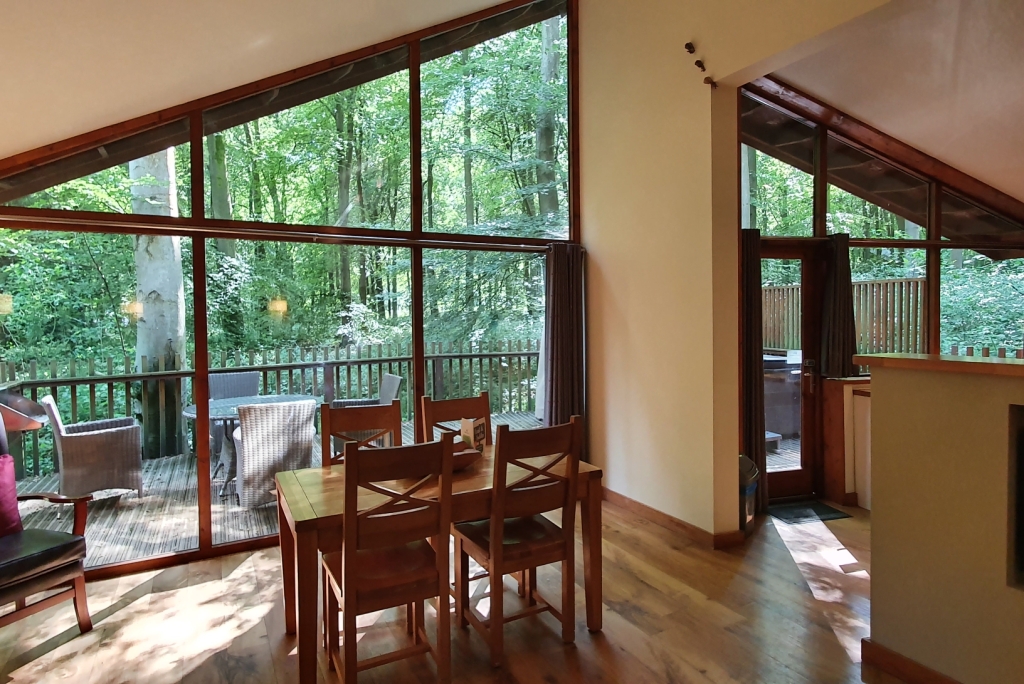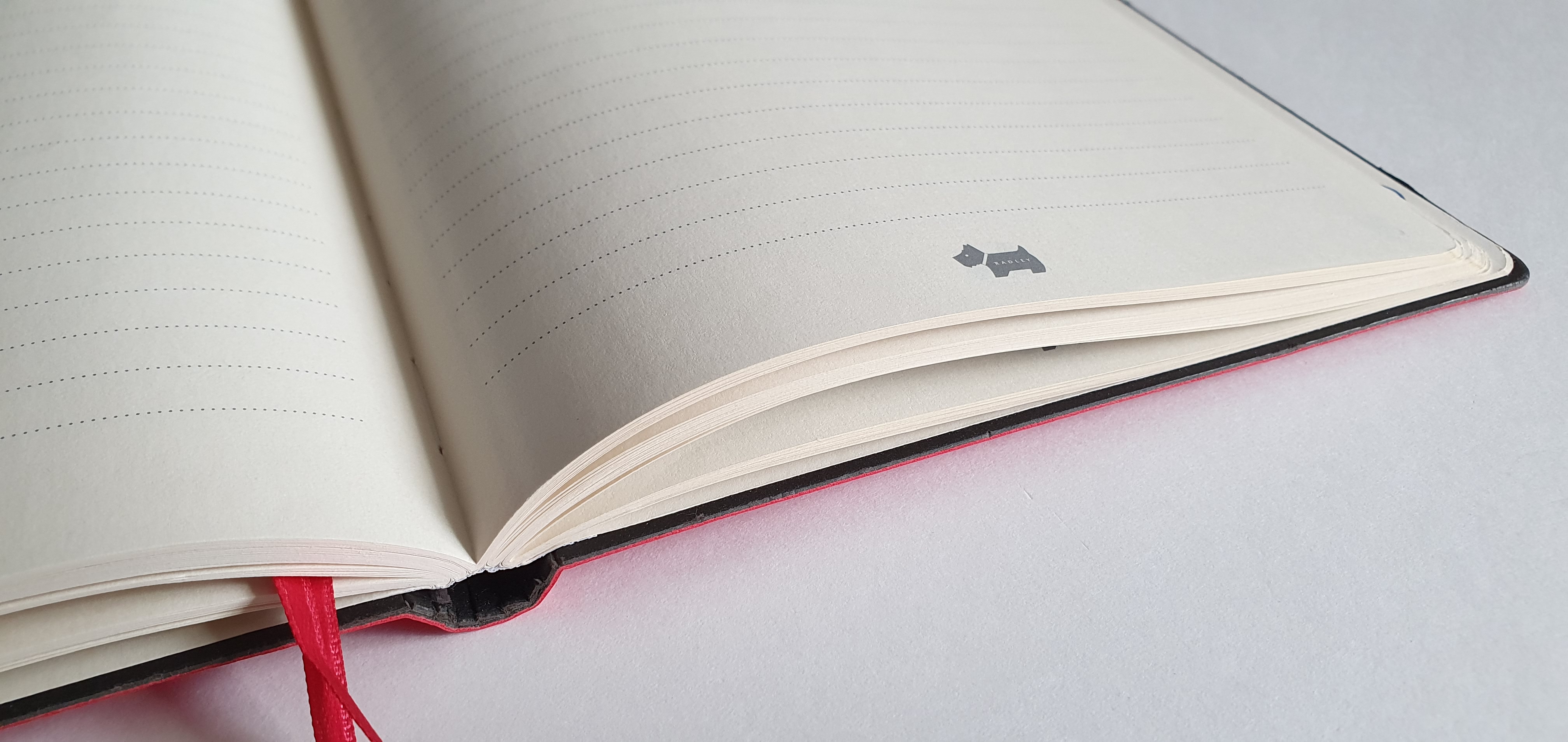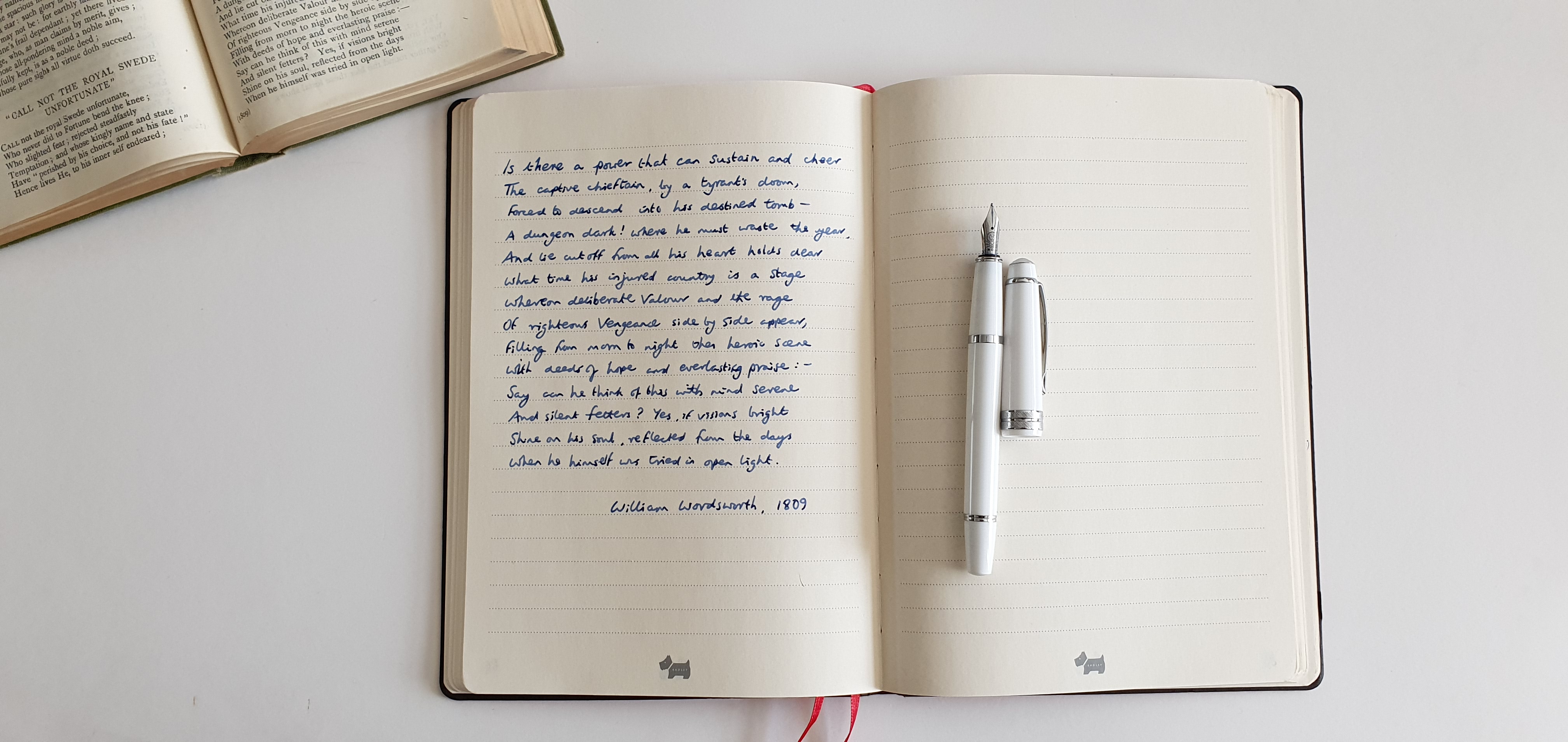Last year, my daily journaling was done in a page a day, Moleskine 18 month volume. I bought it too late to make use of the pages for July to December 2022, but was happy to have them as a sort of bonus notebook.
I persevered with the book although it was not particularly enjoyable to use. This was not, as you might think, due to paper quality which was actually quite pleasant and fountain pen friendly, but rather because I did not like the line spacing of only 6mm row height. Added to this, I found the width of the pages, at 130mm, a bit narrow. An A5 page is 148mm wide and losing 18mm makes a big difference, particularly on days when I wished to use a balloon diagram, to confer some retrospective order on the previous day’s events.
For 2024, I have gone back to my more usual Ryman A5 Page a Day diary. This does not suffer from either of my two complaints above: the row height is 7.6mm and the page width is the full A5, 148mm size. These two features make it more comfortable for me to use. However, it is not perfect. On removing the cellophane at the start of the year, my first discovery was that the covers were thin and bendy and not stiff as I had been used to. To be fair, the description on the belly band states “2024 Soft Cover Flexi Diary, Page a Day”. The word “Soft” refers to the texture which is like a faux leather, whilst “Flexi” means “bendy”, rather than “versatile“.
Whilst on the subject of the description, the words “Page a Day” apply only to Monday to Friday. Saturdays and Sundays have to share a page, which is always a pity. Rather than add the words “but only Half a Page a Day at Weekends!”, Ryman has instead chosen silently to include an image of a double-page spread with a Friday, Saturday and Sunday in view if you look closely.
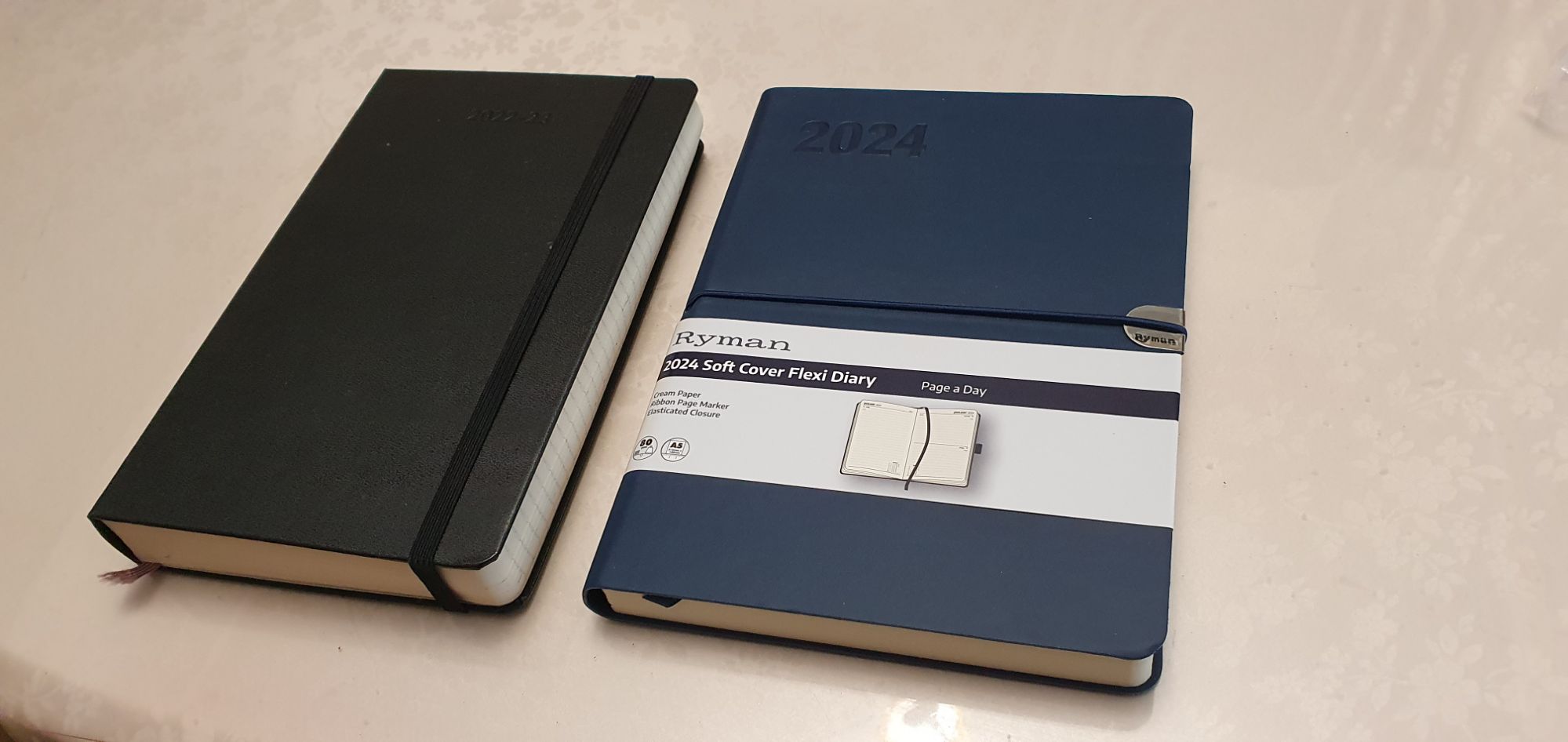
Other than that, there is not much to add. The Ryman paper is a cream colour, 80gsm with a pleasant texture and fountain pen friendly. The binding is sewn to help the book open flat and there is an elastic closure. Given the rather insubstantial cover, there is a metal reinforcement at the edge, to prevent the elastic from wearing away at the cover. But (a) the metal is not stuck down on the front and so leaves a sharp edge, and (b) there is no metal reinforcement for the back cover. I would have preferred that there be a hardback cover so that reinforcement is not necessary.
This will be used for my daily journal, usually written up after breakfast, recalling the events of the previous day. This is an opportunity to enjoy a few minutes with a fountain pen, as well as a memory exercise.
It has also been a recent custom of mine to stick to one fountain pen and ink per month for my diary entries. For January I have started with the Parker 45 (14k gold, medium nib) with Waterman Serenity Blue that I wrote about rather gushingly in my previous post.
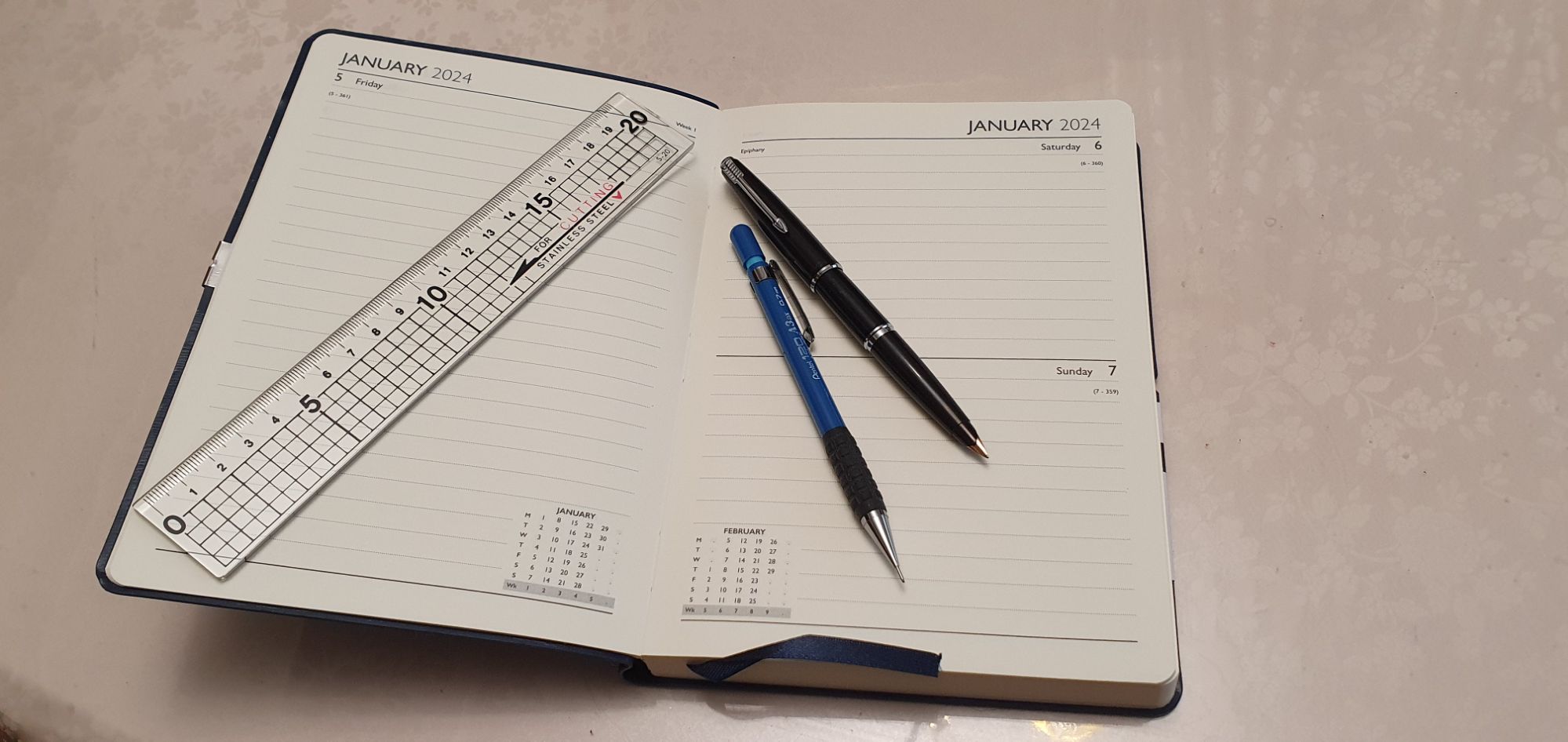
Aside from the diary, I write on most days, in a Stalogy 018 Editor’s Series 365 Days Notebook A5 size. I love the paper in these. I carry this to pen club meets and when out and about, in a stiff leather cover with elastic closure. The cover is a very simple single board, not quite A5 in width and is so stiff that it wants to slam closed all the time. I liked the fact that it did not have any pen loop, credit card pockets or other features, as I found that these make for a lumpy surface if you are writing with the book open inside the cover. However, in practice I found that the cover works much better for me, with my notebook tucked in the other way around, purely to protect it and keep it closed in transit.
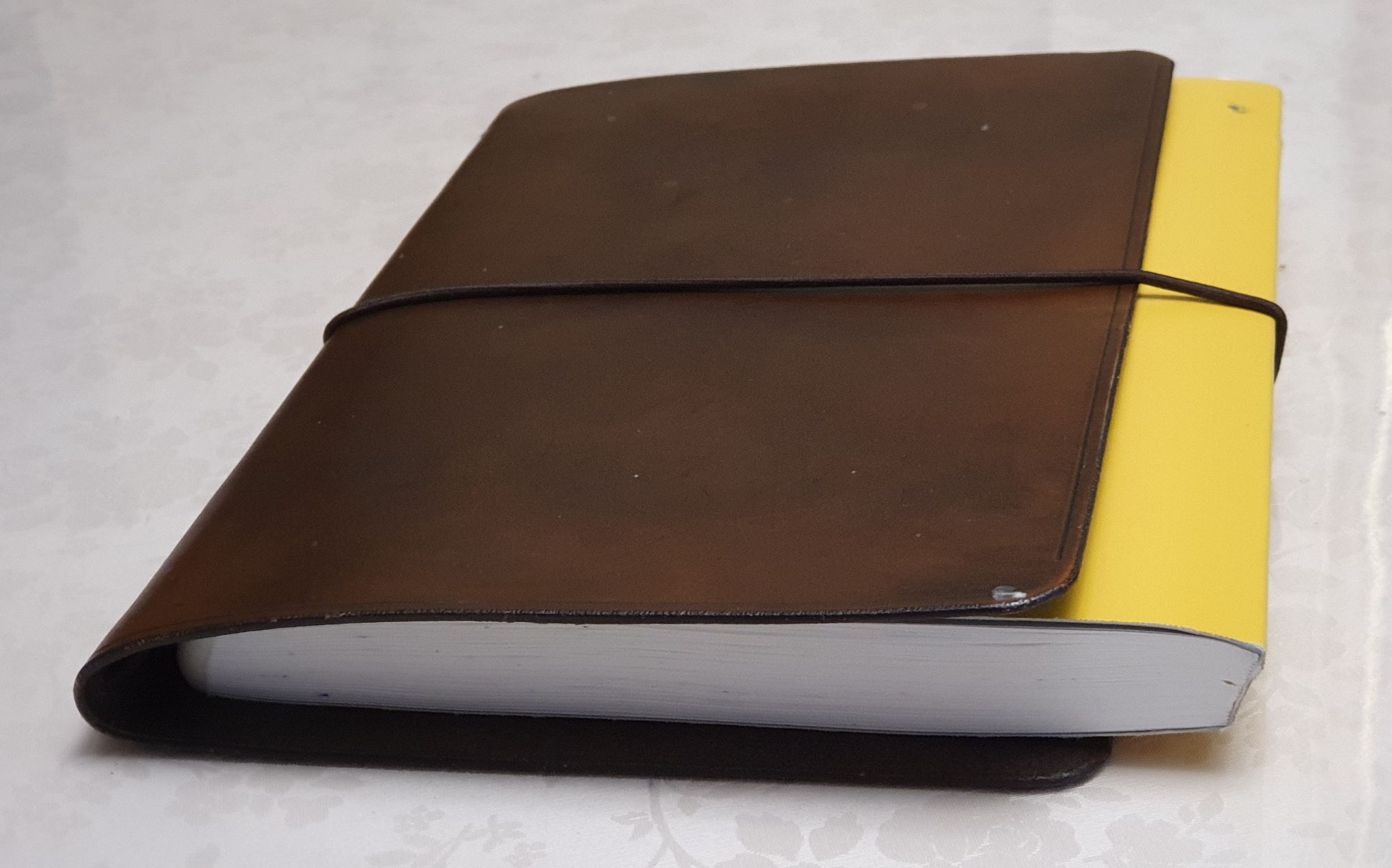
Writing with a nice fountain pen in a Stalogy notebook, is one of my favourite things to do. I use it for all sorts of things, although mostly for enjoying my pens and inks for the sheer fun of it and not for writing anything profound. This is an inexpensive form of relaxation and we all need one of those.
I do also have an A4 Ryman notebook which serves as a bullet journal, or bujo. This is a simple book of lined pages, 37 rows per page, on which I have listed dates for a month down each left-hand page, leaving the right-hand page clear for notes, often divided into two columns. This had enough pages for 2020 to 2025 inclusive, although after four years the cover is getting a bit tatty and flaky now. I find the bujo very useful for diarising dates that are far ahead, such as insurance renewals, road tax and car MOT and service due dates and a few others. Having six years at 24 pages per year, required 144 pages. As the book has 192 pages, this left plenty of double page spreads for lists, such as books read (or to be read), albums to listen to, TV episodes to watch, monthly steps counted and so forth. The possibilities are endless. I have not adorned it with washi tape or ink stamps like the photogenic ones we see on Instagram, but each to his own. I may however create a page for “Fountain pen wish list 2024”, although what I really need to do is to practice not wanting more things. As always, we shall see.

